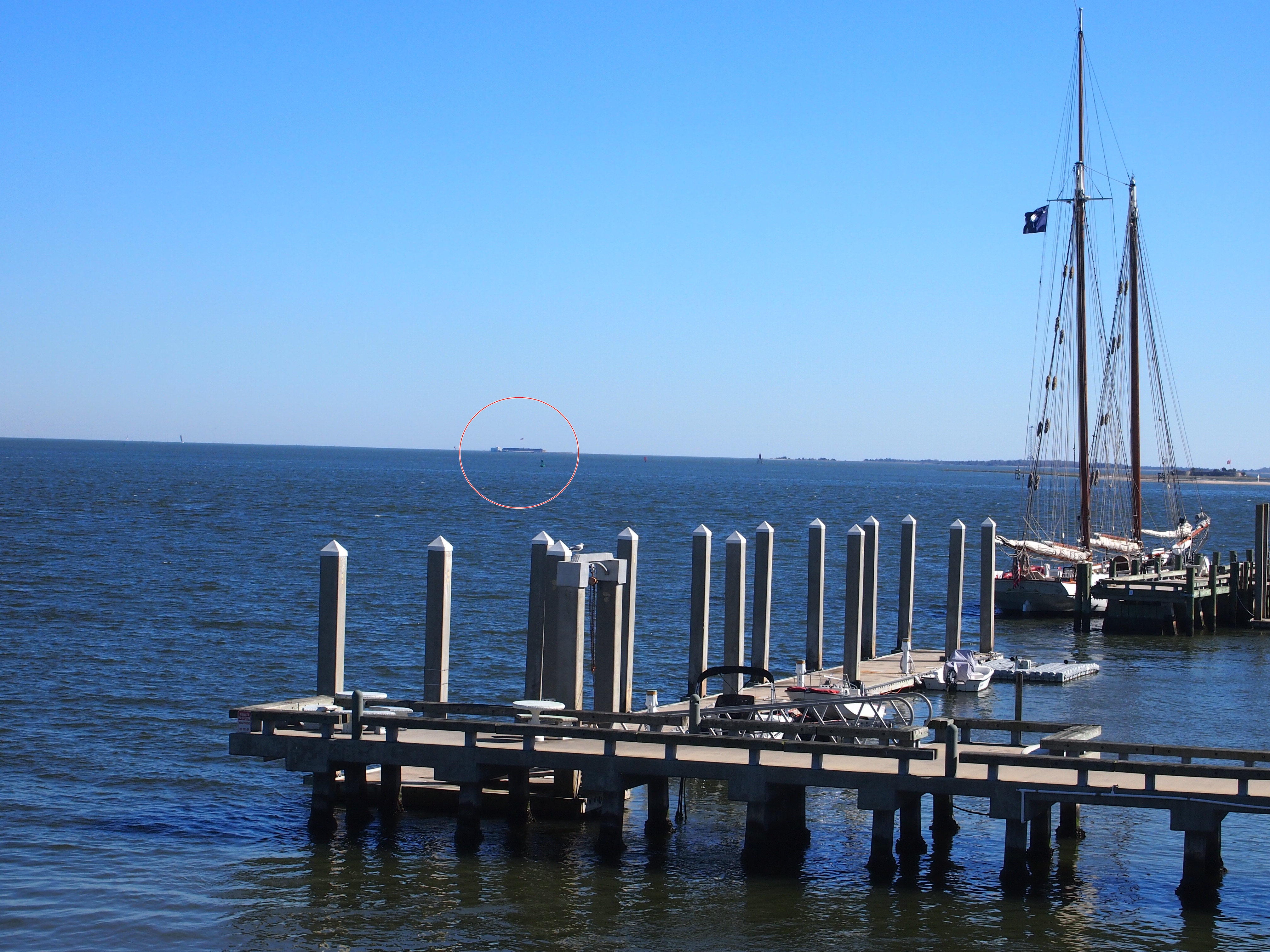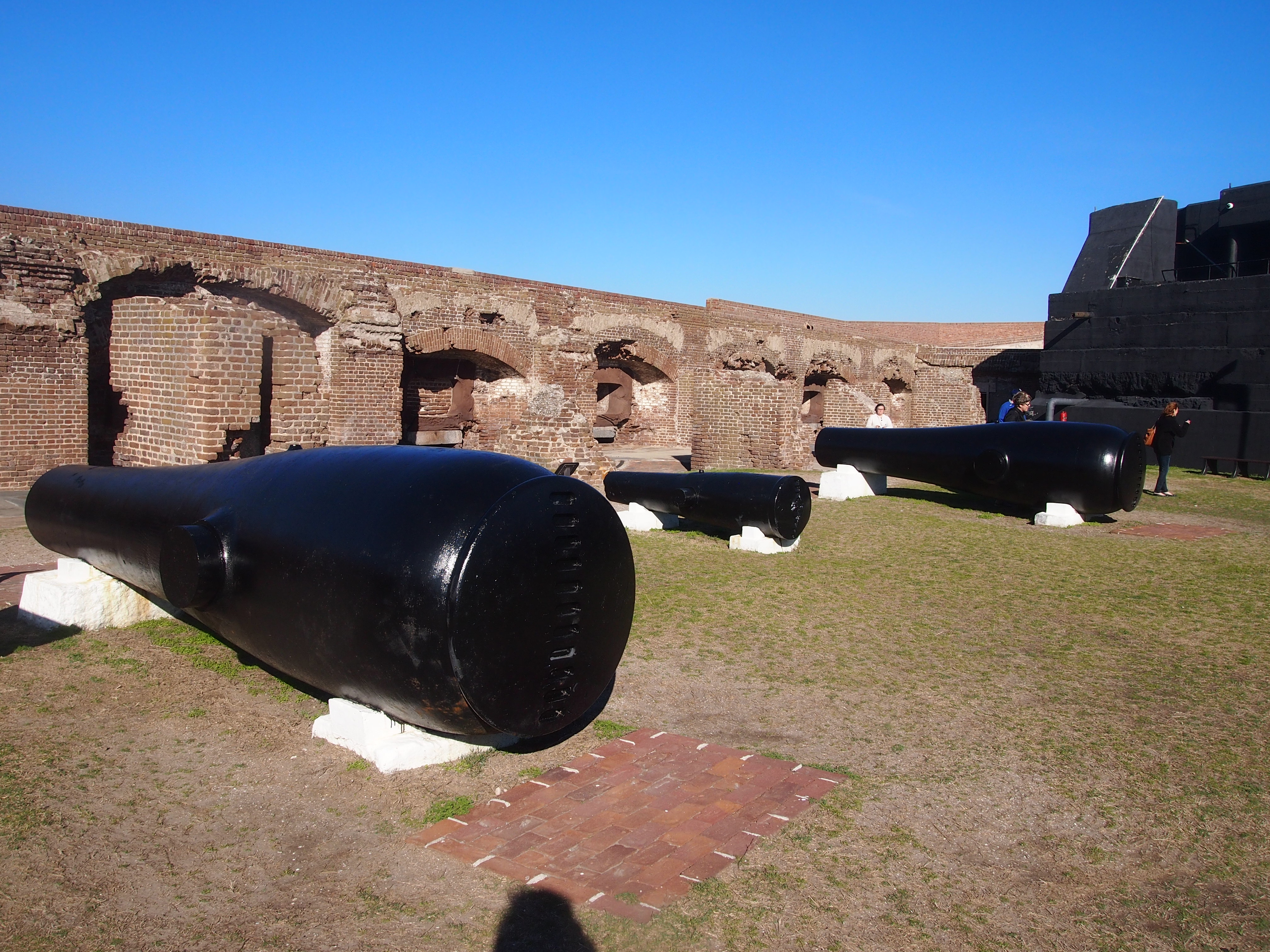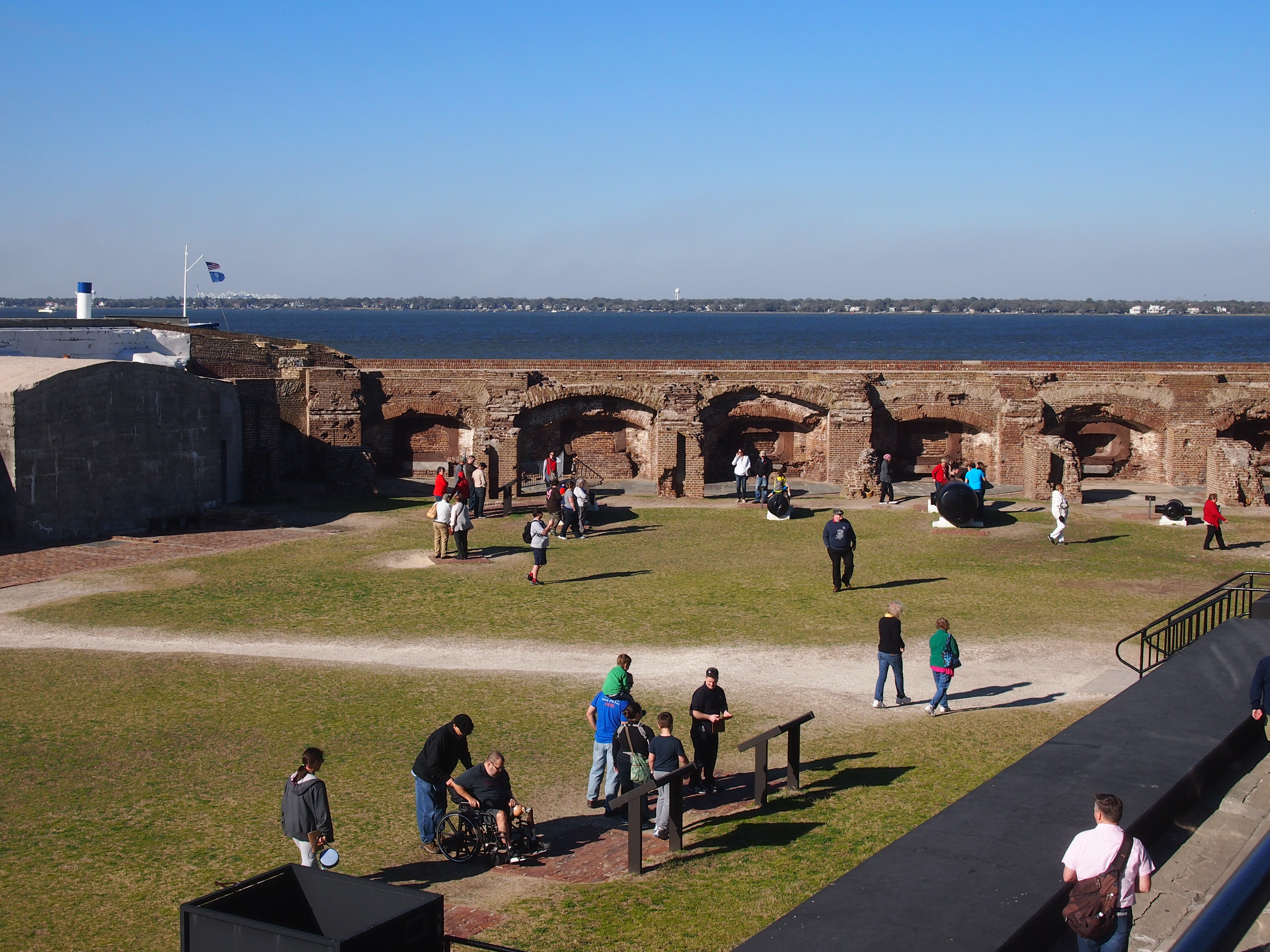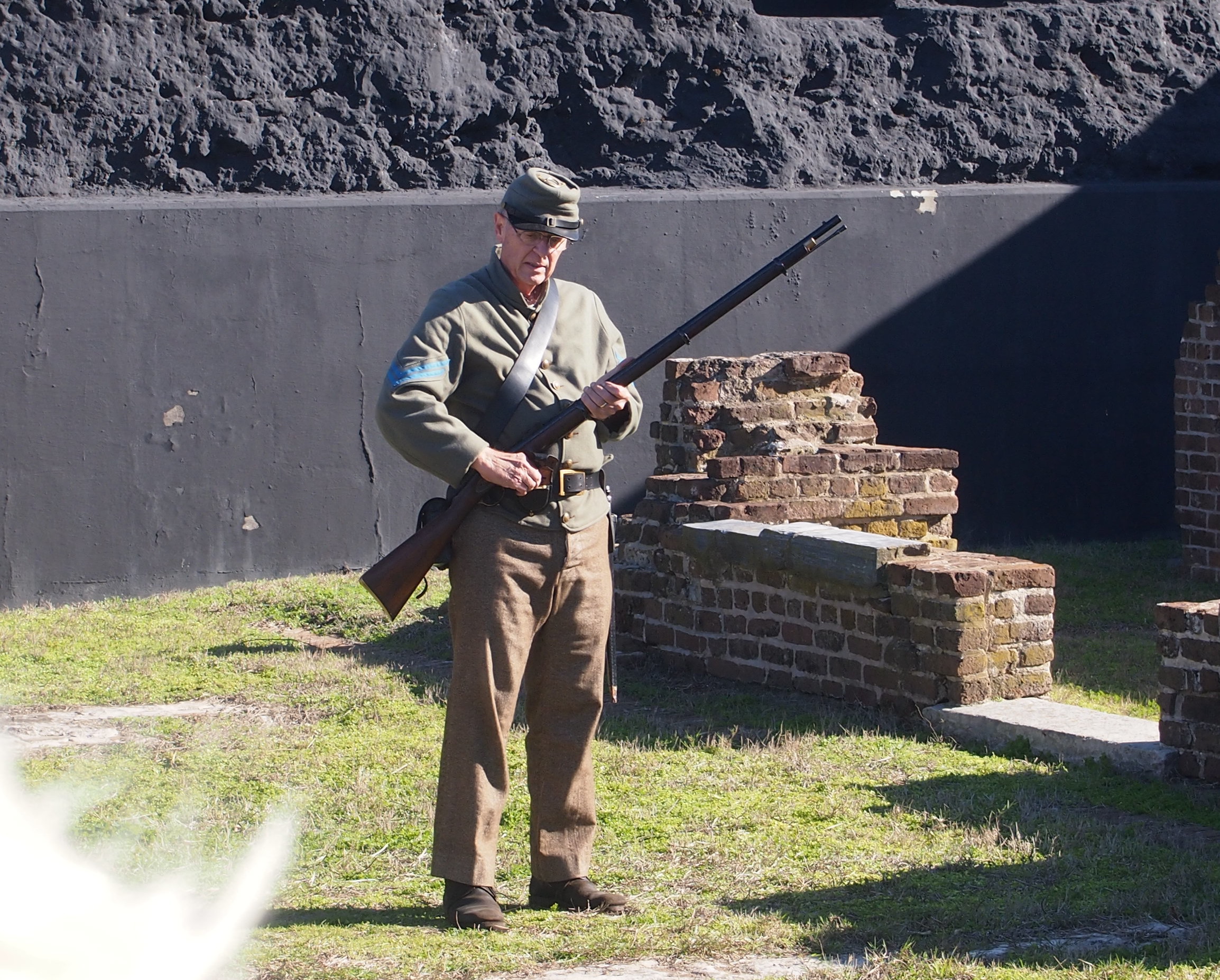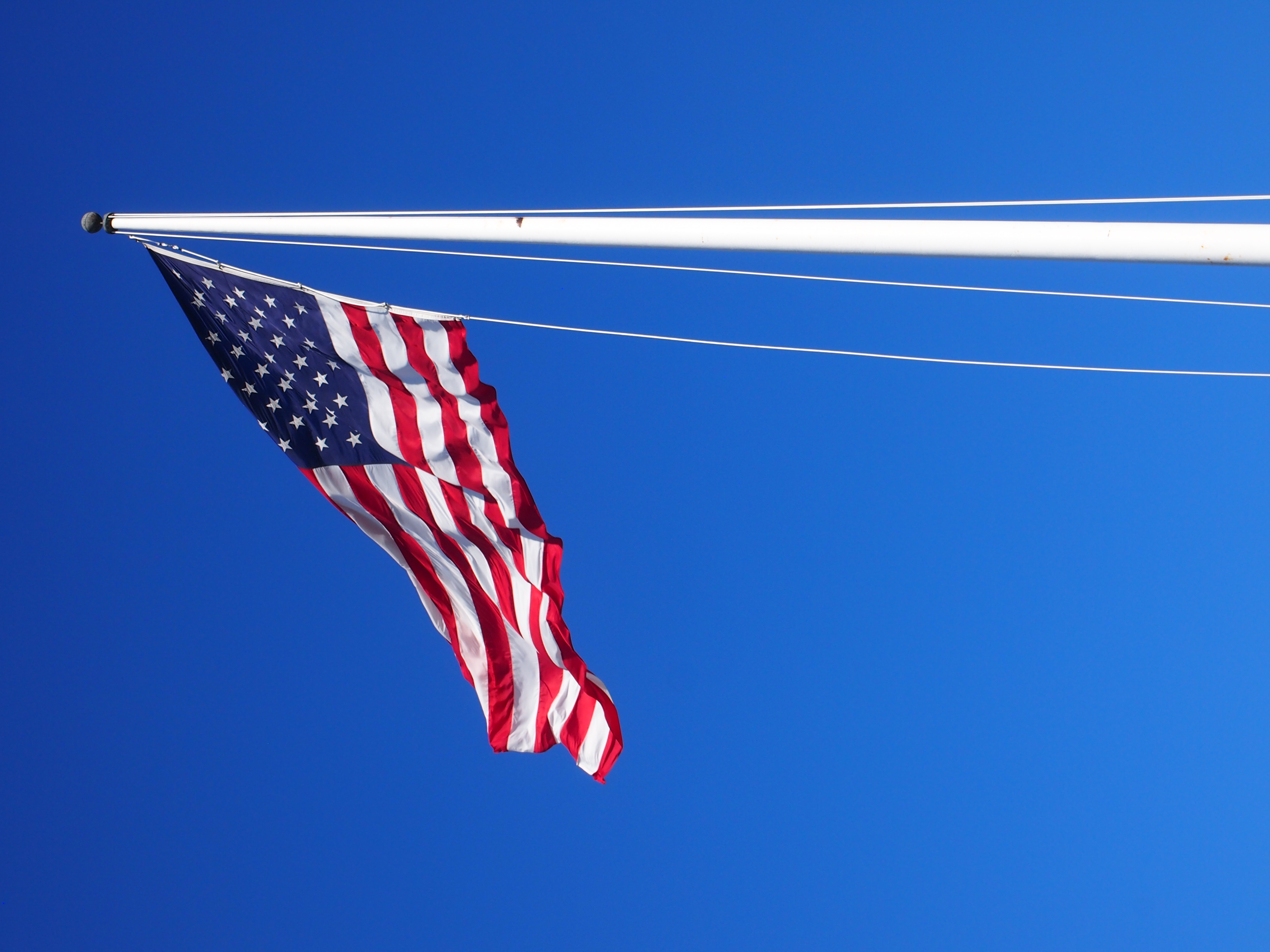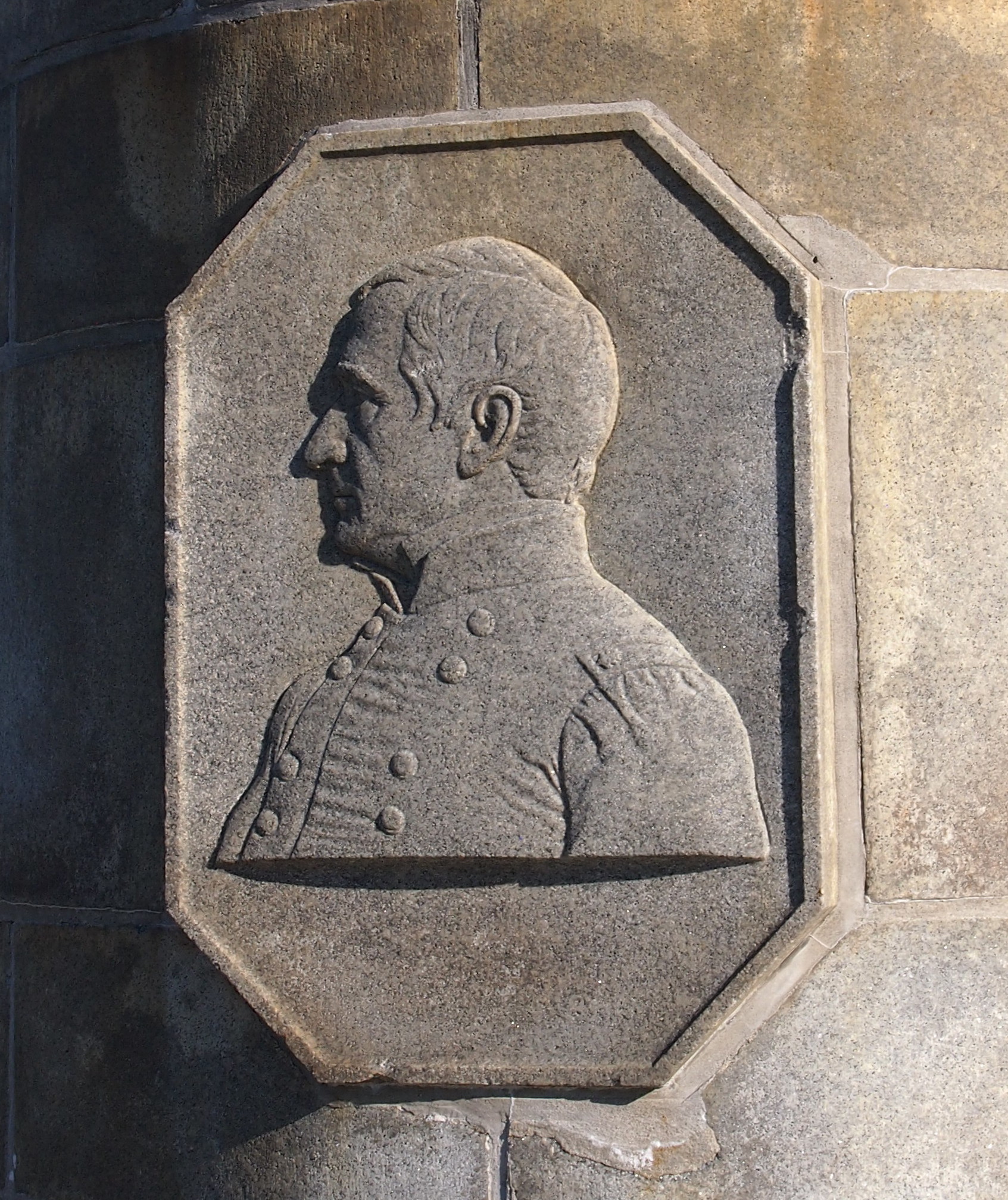To reach Fort Sumter National Monument, you start at Liberty Square, on Charleston’s waterfront, at this building.
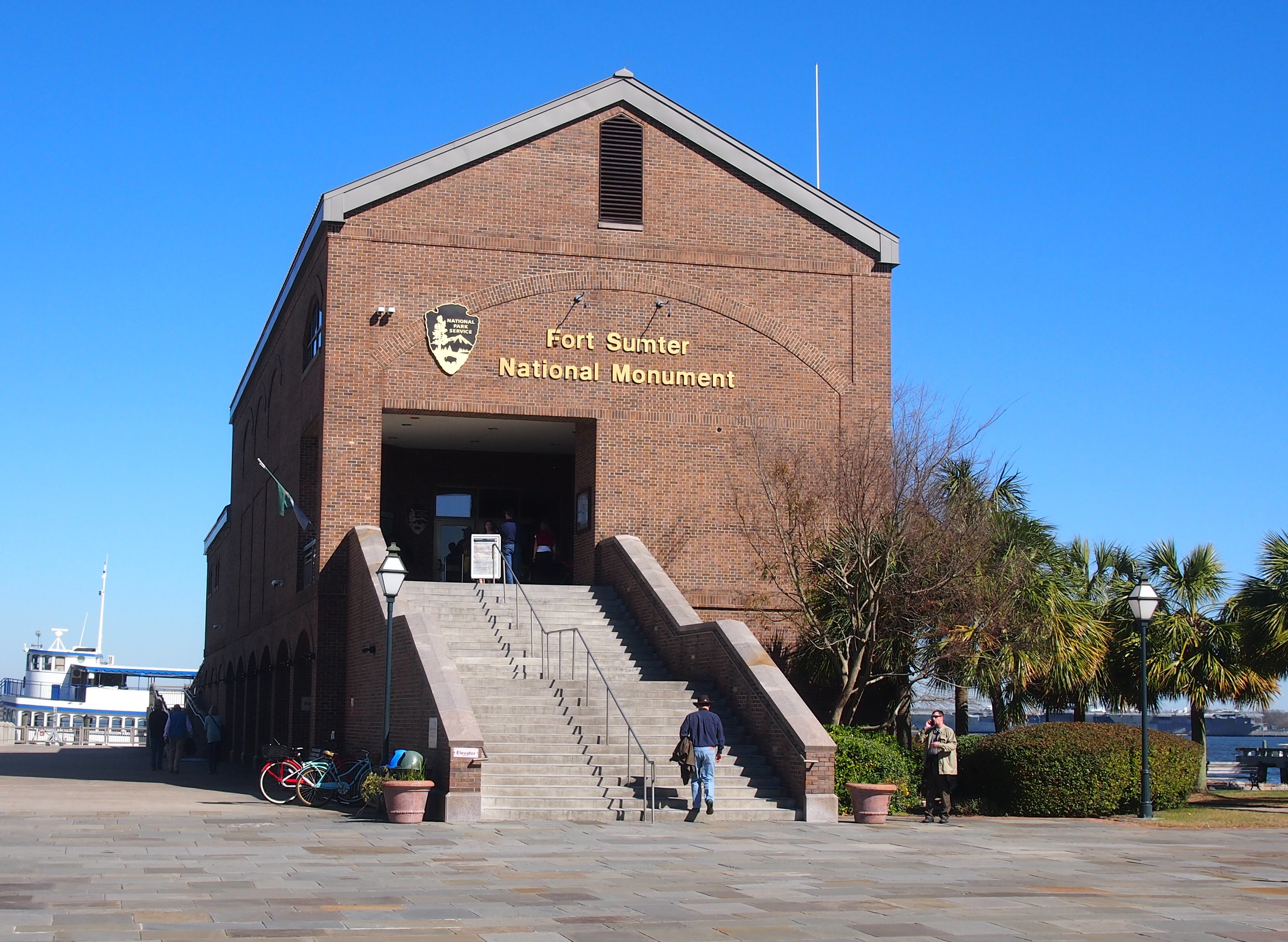 At the other end of the building is a pier were the tourist boats dock, as is visible in the picture above. The view from there, toward Fort Sumter, looks like this on a clear day.
At the other end of the building is a pier were the tourist boats dock, as is visible in the picture above. The view from there, toward Fort Sumter, looks like this on a clear day.
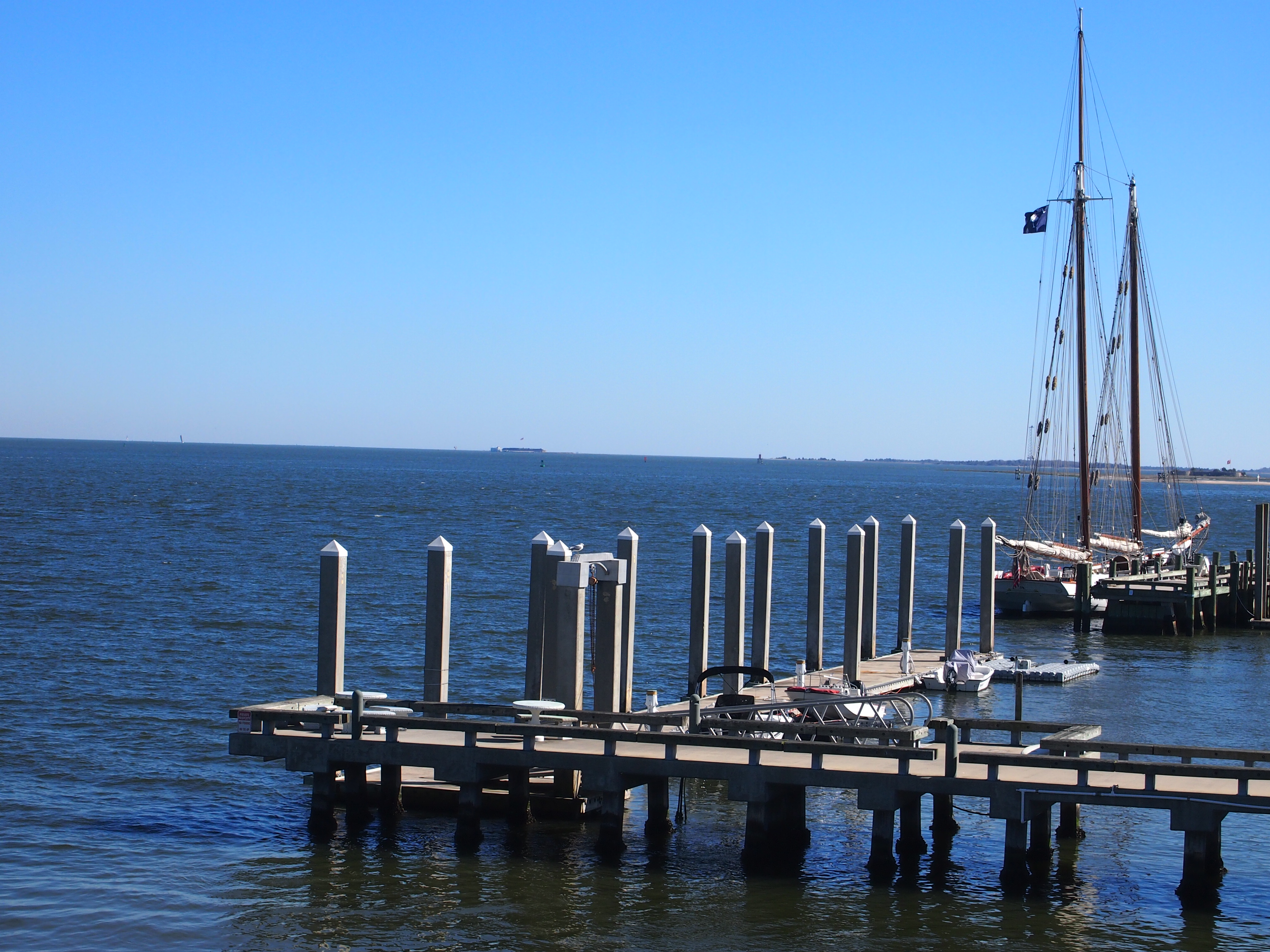 Also included in the monument is Fort Moultrie, but I didn’t make it there. The Fort Sumter part of the national monument is a little hard to pick out, but it is visible on the horizon.
Also included in the monument is Fort Moultrie, but I didn’t make it there. The Fort Sumter part of the national monument is a little hard to pick out, but it is visible on the horizon.
The ride is about 30 minutes. As you proceed, Fort Sumter gets closer.
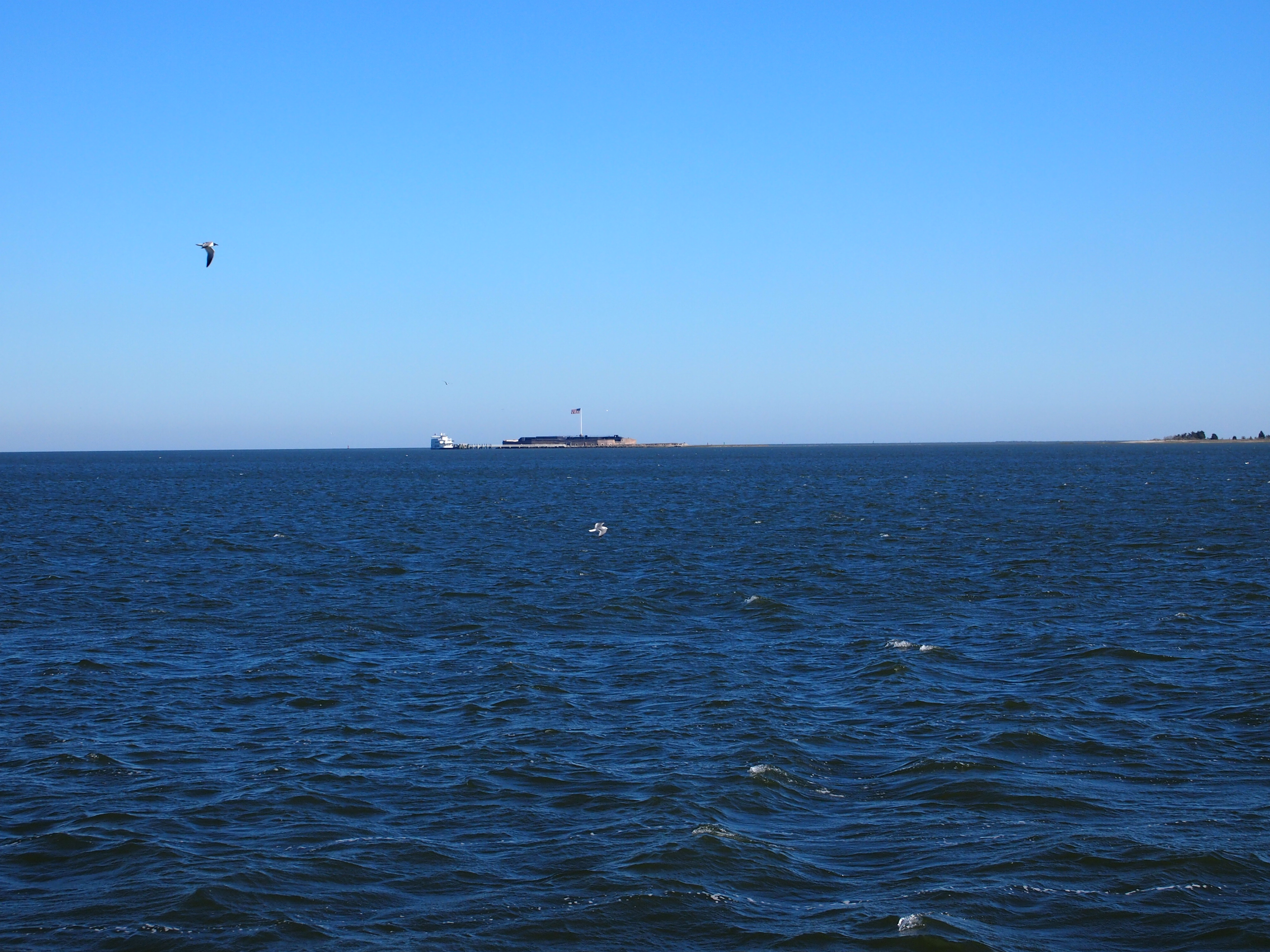 And closer.
And closer.
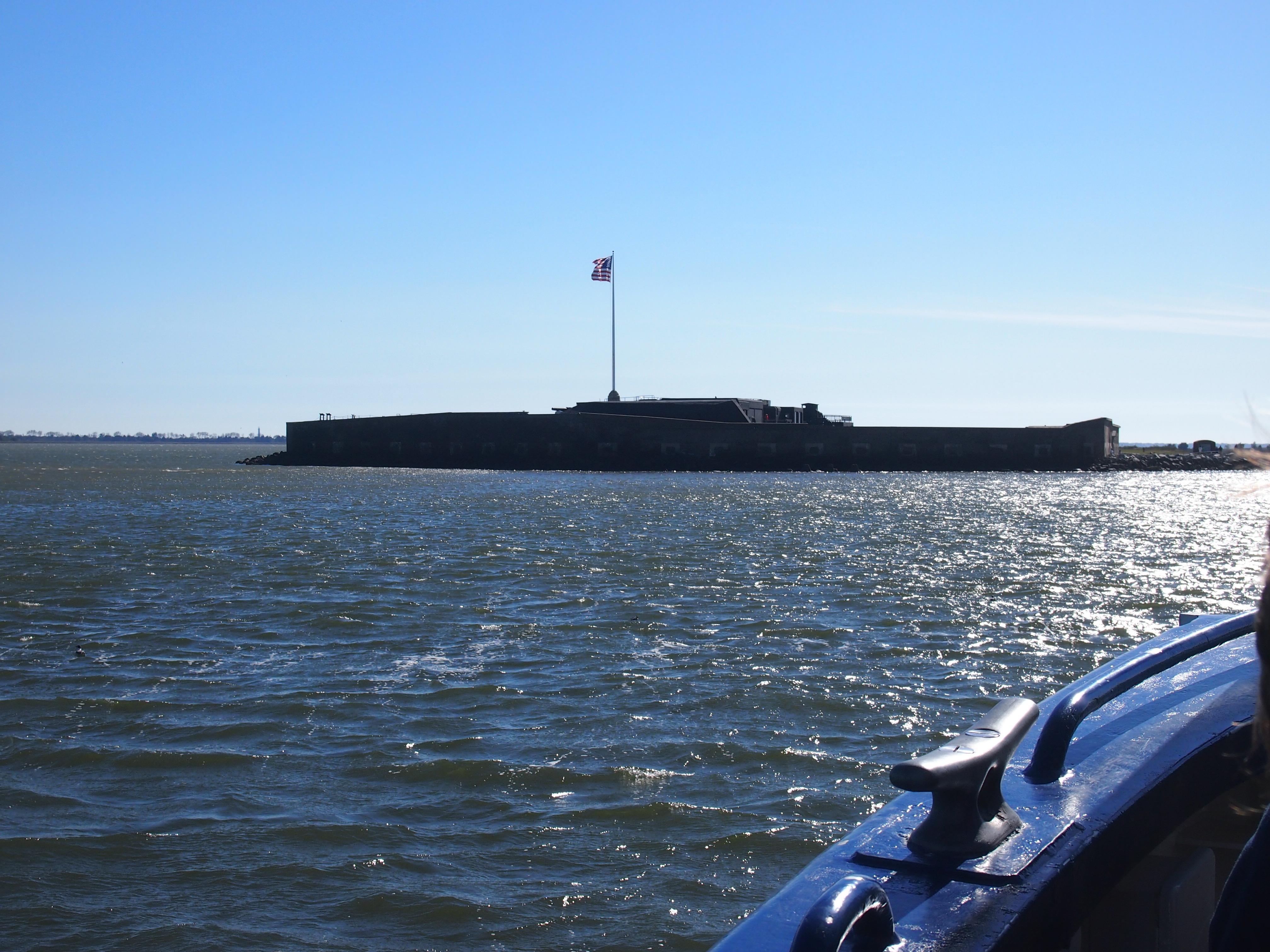 Pretty soon the boat docks at the former fort for about a hour and a quarter visit, which includes a look at the walls, cannons, the former parade ground, the monument’s large flagpole and flag, and Battery Isaac Huger, a sizable black-painted structure built inside the walls at the time of the Spanish-American War that now houses a small museum and gift shop.
Pretty soon the boat docks at the former fort for about a hour and a quarter visit, which includes a look at the walls, cannons, the former parade ground, the monument’s large flagpole and flag, and Battery Isaac Huger, a sizable black-painted structure built inside the walls at the time of the Spanish-American War that now houses a small museum and gift shop.
Some of the cannons were enormous. Can you imagine that thing going off near your ears in an age before ear protection?
A Park Service volunteer demonstrated the loading and firing of a Civil War-era rifle.
He didn’t load it with a real minié ball, put otherwise the demonstration was authentic. After he showed us all of the steps to load the rifle, and fired it once, he did it again as fast as he could a few times, which was very fast, firing in succession. A true enthusiast.
Behind the battery is a slope up to an open field.
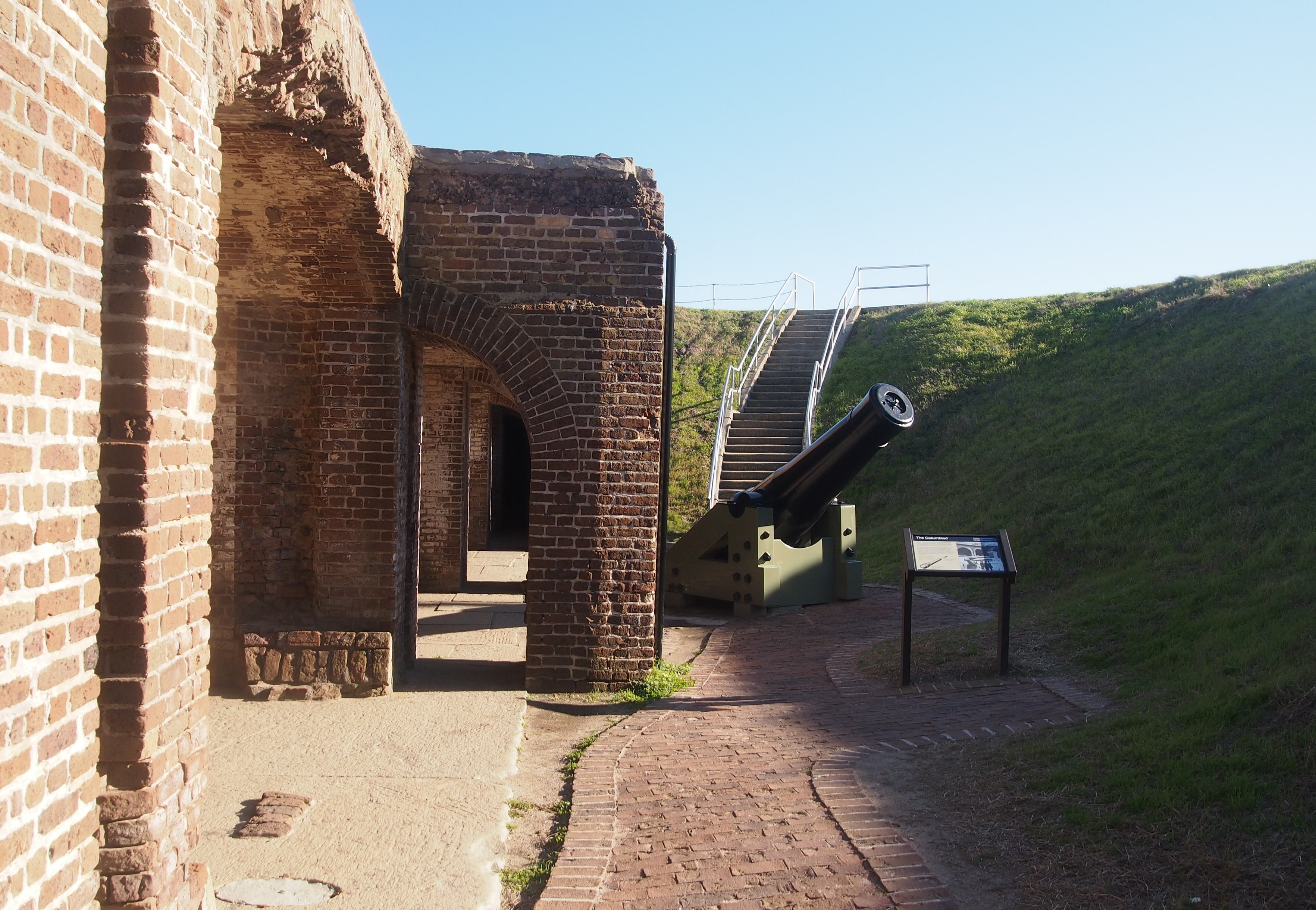 Here are representations the four flags that flew over Sumter during the war: the 33-star U.S. flag like that which flew on April 12, 1861; the first and second Confederate flags; the 35-star U.S. flag after Federal re-occupation of the fort in 1865.
Here are representations the four flags that flew over Sumter during the war: the 33-star U.S. flag like that which flew on April 12, 1861; the first and second Confederate flags; the 35-star U.S. flag after Federal re-occupation of the fort in 1865. 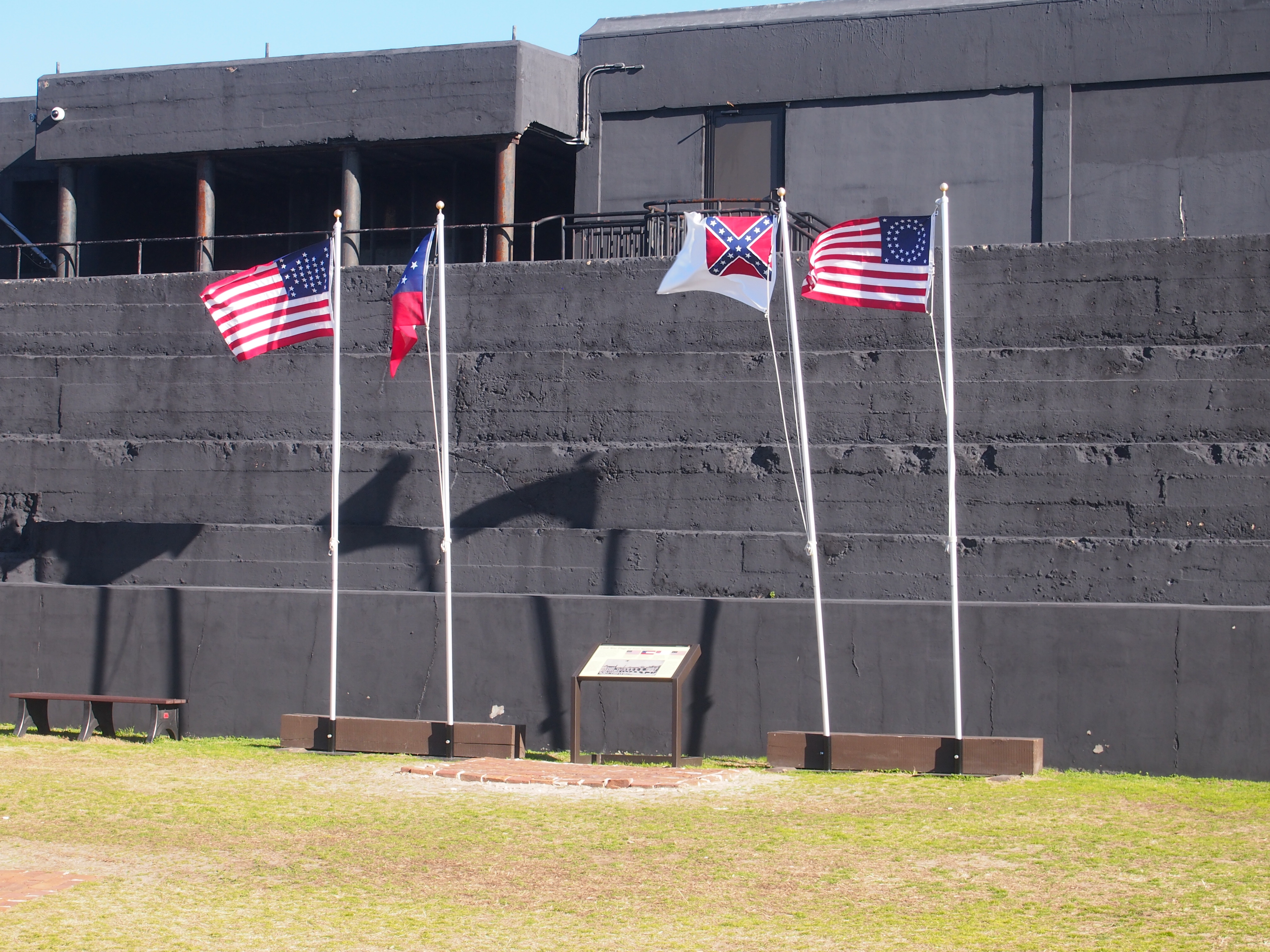 The flag that Major Anderson had lowered when he surrendered the fort, and the one that was raised again symbolically in 1865 — Anderson returned for the occasion — is on display in the national monument’s museum. So is the Palmetto Flag that the South Carolinians flew when the fort was first captured.
The flag that Major Anderson had lowered when he surrendered the fort, and the one that was raised again symbolically in 1865 — Anderson returned for the occasion — is on display in the national monument’s museum. So is the Palmetto Flag that the South Carolinians flew when the fort was first captured.
The current Stars and Stripes, visible from far away, is atop a large flagpole behind the battery.
Major Anderson is honored in relief at the base of the large flag pole.
From 1861 by Adam Goodheart: “It would be one thing if President Buchanan had simply announced that he was withdrawing the troops from Charleston Harbor and turning the forts over to South Carolina, a decision that Anderson would have certainly obeyed, perhaps even welcomed. But he would be damned if he was to surrender — even worse, perform a shabby pantomime of a surrender — before a rabble of whiskey-soaked militiamen and canting politicians.
“Like so much else about the beginning of the Civil War, Major Anderson’s move from Fort Moultrie to Fort Sumter is largely forgotten today. At the time, however, the little garrison’s mile-long journey was seen not just as a masterstroke of military cunning but as the opening scene of a great and terrible national drama… ‘Major Robert Anderson, thundered the Charleston Courier, ‘has achieved the unenviable distinction of opening civil war between American citizens by a gross breach of faith.’ Northerners, meanwhile, held enormous public banquets in Anderson’s honor; cannons fired salutes in New York, Chicago, Boston, and dozens of other cities and towns.
“And considered in retrospect, Anderson’s move seems freighted with even more symbolism. He lowered his flag on an old fortress, hallowed by the past, yet half ruined — and then raised it upon a new one, still unfinished, yet stronger, bedded in New England granite…
“Twenty years after the war, when officials at the War Department began preparing the Official History of the War of the Rebellion, a massive compilation of documents that would eventually grow to more than two hundred thousand pages, the first of all the uncountable documents that they included was Anderson’s brisk telegram announcing his arrival at Sumter. Nineteenth-century historians knew that without this event, the war might not have happened…”
